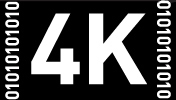

Writer/creator Julian Fellowes and series director Michael Engler managed to make the first Downton Abbey film a surprisingly enjoyable night at the movies. But this time, working with feature director Simon Curtis (My Week with Marilyn, Woman in Gold, Goodbye Christopher Robin), Fellows phones it in. This second feature follows the aristocratic Crawley family and their servants into the late 1920s and centers on their surprise inheritance of a villa in the South of France. Half the characters travel to the continent to attempt to uncover the mystery of why the Marquis de Montmirail would leave his family's summer home to Lady Grantham (Maggie Smith). The other half stays back at Downton while it’s being used by a film crew making a silent picture, right at the point in time when talkies are beginning to take over. The beats are even more predictable than the weakest episodes of the television series. Of course, predictability isn't always the worst thing with light frothy escapist fluff like this, if you enjoy spending time with the characters. But we're really not afforded much time with any of them here.
While photographed in widescreen, this movie is shot, directed, and edited like TV without the luxury of an episodic running time. The film is not allowed any time to breathe, settle into a rhythm, or provide the actors with a chance to do anything more than deliver simplistic information that moves the slight plot forward. Every third or fourth cut in the first act is so jarring it's like the screen keeps poking you in the eye. With the setup so rushed, even the characters who do get screen time end up feeling extraneous. The most impressive aspect of the first film was Fellowes's ability to provide something noteworthy for each member of his large ensemble, but he hasn't bothered this time out.
It's always frustrating when a filmmaker has clearly shot the first draft of a script—the viewer is left thinking, "couldn't you have asked the writer to do one more pass, to smooth out the rough spots before rolling the cameras?" But Downton Abbey: A New Era is the first film I've seen that plays like a director shot an outline. No scene lasts more than 30 seconds or conveys more than a single piece of narrative information. It's not until we get through what passes for the story and settle in for the final thirty minutes of farewells and happy endings that the movie even qualifies as a pleasant-enough distraction.
Twitter Capsule:
While photographed in widescreen, this movie is shot, directed, and edited like TV without the luxury of an episodic running time. The film is not allowed any time to breathe, settle into a rhythm, or provide the actors with a chance to do anything more than deliver simplistic information that moves the slight plot forward. Every third or fourth cut in the first act is so jarring it's like the screen keeps poking you in the eye. With the setup so rushed, even the characters who do get screen time end up feeling extraneous. The most impressive aspect of the first film was Fellowes's ability to provide something noteworthy for each member of his large ensemble, but he hasn't bothered this time out.
It's always frustrating when a filmmaker has clearly shot the first draft of a script—the viewer is left thinking, "couldn't you have asked the writer to do one more pass, to smooth out the rough spots before rolling the cameras?" But Downton Abbey: A New Era is the first film I've seen that plays like a director shot an outline. No scene lasts more than 30 seconds or conveys more than a single piece of narrative information. It's not until we get through what passes for the story and settle in for the final thirty minutes of farewells and happy endings that the movie even qualifies as a pleasant-enough distraction.
Twitter Capsule:
The first Downton film was surprisingly fun and managed a nice sense of closure, this one is about as empty as fluff can get. It's the first film I've seen that plays like a director literally shot an outline.




